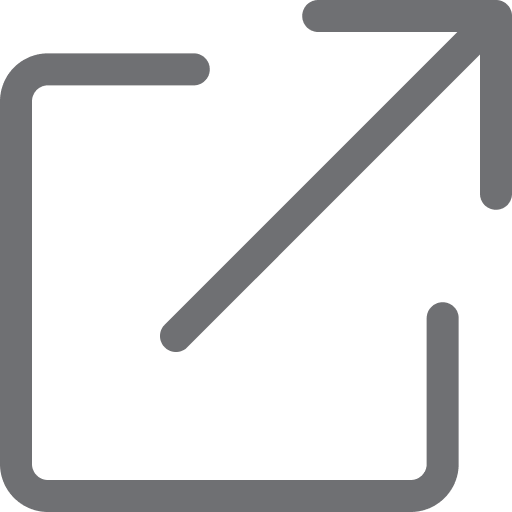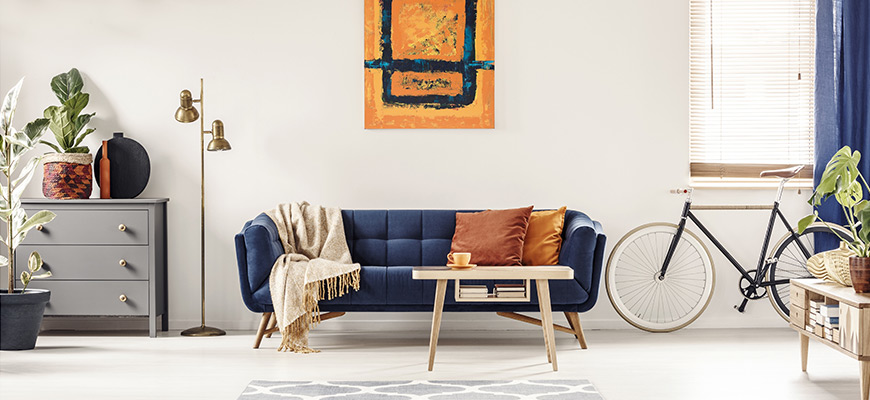This blog post is sponsored by Fairstone. Read our advertiser disclosure.
Buying a home can be one of the most fulfilling — as well as frightening — things you’ll ever do in your life. Not only is it the most expensive asset you’ll ever own, but buying a home involves a multitude of complex financial and legal factors that can be especially overwhelming for a first-time homebuyer. This comprehensive guide will help make the home-buying journey easier.
Saving for your home
The process of buying a home doesn’t actually start when you begin looking at properties with a real estate agent. It begins years before when want-to-be home buyers make a concerted effort to come up with ways to budget and save as much money as possible to put towards a first home. Luckily, Canadians have access to a solid selection of money-saving options that can help them make their home-buying dreams come true.
A tax-free savings account can be one of the best savings tools available to potential homebuyers. This registered account allows Canadians to put aside a prescribed amount into a savings account. The prescribed amount changes annually and can be found on your tax return or on federal government websites; for 2022, the amount was $6,000. Whatever interest you gain throughout the life of the account is yours tax-free. The magic of compound interest can accelerate the amount of interest you can earn and really help your savings grow.
Unlike with an RRSP, which only defers the payment of taxes owing, a TFSA allows savings to grow indefinitely without tax implications, as long as you stay within the deposit rules, even when you make a withdrawal.
Normally a registered retirement savings plan is a tax-deferring vehicle intended to help Canadians put money towards retirement rather than to save up for a home. However, thanks to a unique program called the Home Buyers’ Plan, in some circumstances people can withdraw money from their RRSP and put it towards a down payment for their first home (see more details below).
The federal government's Home Buyers' Plan lets first-time homebuyers withdraw up to $35,000 of their RRSP savings (or $70,000 per couple) to help on their first home. The funds are not subject to withdrawal taxes as long as the money is repaid within a 15-year period. There are numerous qualification requirements for the HBP, but for those that can meet the criteria, this plan can help with savings toward the cost of a first home, especially if you’ve been contributing to your RRSP for a while.
The First-Time Home Buyer Incentive is a government shared-equity mortgage program that allows first-time home buyers to borrow 5% or 10% of an existing or newly constructed home's price to increase their down payment. Because they are able to increase their down payment amount, participants have lower monthly mortgage payments.
Paying for your home
Saving up for a home isn’t the only important consideration. There are a few other issues that factor into the home-buying process.
Down payment: Canada has strict rules about minimum down payments. You’ll need a 5% down payment to buy a home valued at $500,000 or less. Homes between $500,000 and $1,000,000 require a down payment of 5% on the first $500,000 and then 10% on the rest. Homes $1 million or more require a down payment of at least 20% of the purchase price.
It's also important to note that if you don’t provide a down payment of at least 20%, you’ll be required to get mortgage loan insurance, also referred to as mortgage default insurance. Premiums can be as high as 4.5% of your overall mortgage.
Mortgage process: There are many steps to the mortgage process. These are just some of the major ones to consider:
Pre-approval: While not mandatory, getting pre-approved before shopping around for a home is a smart step. During the process, a lender checks your credit and your financial information before giving you a quote, so you receive a very realistic picture of what you can afford. Many lenders also guarantee the pre-approval quote for up to 120 days.
Stress test: To get a mortgage you’ll be required to pass a stress test. The test helps a lender (and the potential home buyer) determine what’s affordable. To pass the test you’ll have to show that you can afford to make mortgage payments at your mortgage rate + 2% or at a rate of 5.25%, whichever is higher.
Decide on mortgage term and type of interest: Other important considerations will include how long the mortgage term should be (such as 3 or 5 years) and whether or not you want to go with a variable-rate mortgage (which can fluctuate throughout your mortgage contract based on lender’s prime rate) or a fixed-rate mortgage (your interest rate will stay the same regardless on the prime rate). Interestingly, the most common type of mortgage in Canada is a 5-year fixed rate mortgage.
Choosing the right mortgage advisor: Make sure that your mortgage advisor:
Checks your credit score and gives you advice on how to improve it, if needed
Helps you establish a saving strategy and determine much money you’ll need to save for a down payment
Informs you of all fees (like appraisal and prepayment fees) and potential costs that you’ll need to budget for.
Buying
Buying a home can come with a lot of extra fees that may be a surprise to a new homeowner.
Condos fees, if applicable:Condo fees may include things like utilities and internet. Be sure to ask what’s covered so you can budget accurately.
Home inspection: Before making an offer on a home, it’s vital to get the property looked at by a professional home inspector. This will provide invaluable information about any structural weaknesses or potential repairs that could be needed. Getting an inspection done first could prevent your from buying an unsuitable house and save you tens of thousands of dollars in repairs.
Closing fees:Closing costs can be a significant expense and can include things like a lawyer to oversee the legal side of the transaction and do a title check.
This tax is generally based on your home’s purchase price. It varies by province or territory and some cities (like Toronto) even charge an additional land transfer tax. Your real estate agent should be able to let you know the details. Notably, some provinces and municipalities may offer discounts or rebates for first-time home buyers.
Adjustment fees: These could include any expenses that the seller prepaid like utilities or property tax.
Moving expenses: This expense will vary greatly based on whether you decide to hire a professional moving company or you elect to move yourself with a rented truck.
Homeownership
While most first-time home buyers know to include their monthly mortgage payments when trying to figure out their budget, there are many significant expenses that may not be so obvious, and which can continue to add up over time.
Mortgage principal plus interest paymentWhen budgeting for monthly mortgage costs, don’t forget to include interest payments and mortgage default insurance.
Annual taxesAnnual taxes include things like a city and school tax. Often these taxes are combined into one property tax, which usually amount to a cost of about 0.5% to 2.5% of your property value. Property taxes tend not to be an expense that first-time homeowners think about, and yet they can add thousands of dollars to the yearly cost of your home. Paid to your municipality, these taxes cover shared costs like road repair, garbage pick up, snow removal and the cost of schools in the area. Your real estate agent should be able to tell you how much to budget for property taxes for your new home.
Home insuranceHome insurance will protect your property against fire, theft and liability. Depending on what kind of policy coverage you want and the amount of your deductibles, home insurance could add hundreds of dollars to your home cost annually.
Utilities Another expense will be utilities like heating, electricity and water, as well as things like telephone, internet and cable or streaming services.
Property maintenance and repairsAnother cost that you’ll need to budget for aside from any updates and renovations that you want to make is property maintenance. There’s really no hard and fast rule when it comes to estimating the cost of repairs and maintenance.
A popular rule of thumb is the 1% rule, which advises homeowners to expect to spend at least 1% of the purchase price of their home on maintenance per year. Other advice suggests that owners should budget for repairs based on the square footage of their home at a cost range of $0.71-$3.94 per square foot annually.
Furnishing and AppliancesIt can be difficult to predict what new appliances will cost because it may be possible to work appliances like fridges and stoves into the purchase price of the home. Look online and price check to get an accurate idea of what other necessary furnishing and appliances will cost if needed.
Create a Household BudgetBefore putting an offer on a home, it’s important to make sure to you can afford all of the expenses that come with homeownership. Creating a household budget is one of the best things you can do to ensure you’re getting closer to your dream of home ownership.
Here are some things to keep in mind when it comes to creating a household budget:
Create a household budget that considers the costs outlined above, so you can assess whether or not you are able to comfortably afford the home you’re considering.
If you’re currently renting, use your rent amount as your starting point for calculating the monthly mortgage payments you can manage.
Make a list of all the expected expenses related to home ownership, starting with the expenses you already have – include grocery, transportation, debt repayments, etc.
Add the expenses you will start paying once you own a home.
It’s important to keep in mind that total monthly expenses should still allow you to keep saving for other goals (like retirement or a vacation), while maintaining the lifestyle you want.
Make sure you include regular contributions to an emergency fund. Ideally, enough to cover 3 to 6 months of living expenses. This will ensure you can continue to pay the mortgage if faced with an unexpected job loss or another costly unexpected financial situation.
When calculating how much money to put aside for an emergency, keep in mind that homeownership can come with a lot of unexpected expenses, such as emergency home repairs (like a flooded basement or updating electrical).
Pro-Tip: How to Build an Emergency Fund
Consider these tips on how to get started building an emergency fund:
Automate your savings: set up auto-pay with your bank so that a portion of your paycheque is sent automatically to a savings account every payday.
Make sure you put your emergency fund in an account where you can access the funds quickly (i.e., not in the stock market).
Maximize your interest earnings by putting the money into a high-interest savings account.
Review your budget and find ways to save even a small amount of money every month (like those daily coffees or takeout meals) that you then transfer to your emergency fund.
Bottom Line
There are obviously many factors to take into account when creating a realistic and manageable budget for your first home purchase. But don’t be overwhelmed. With a little time and patience, you can make an informed decision about what approach to home buying makes the most sense for your budget.












